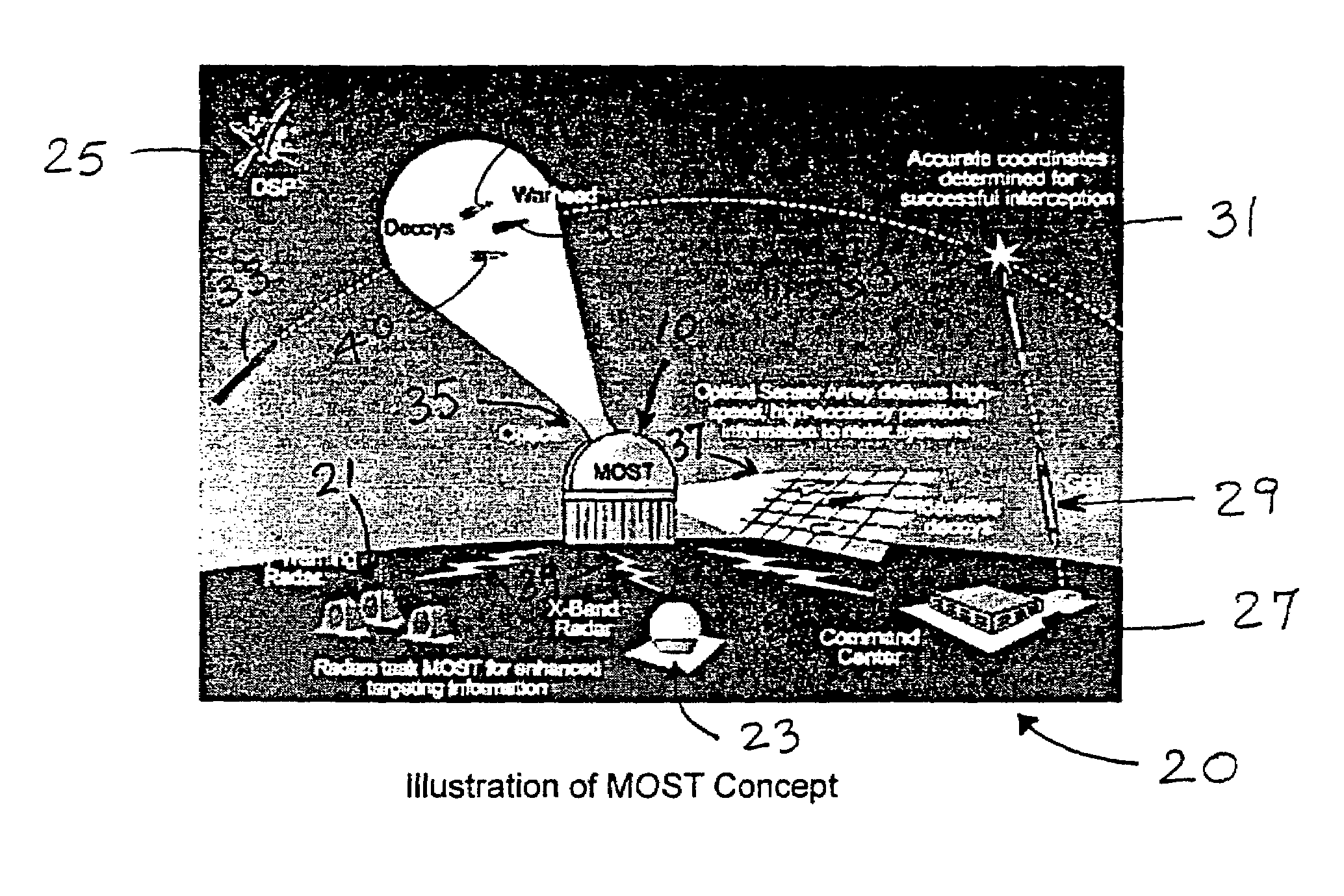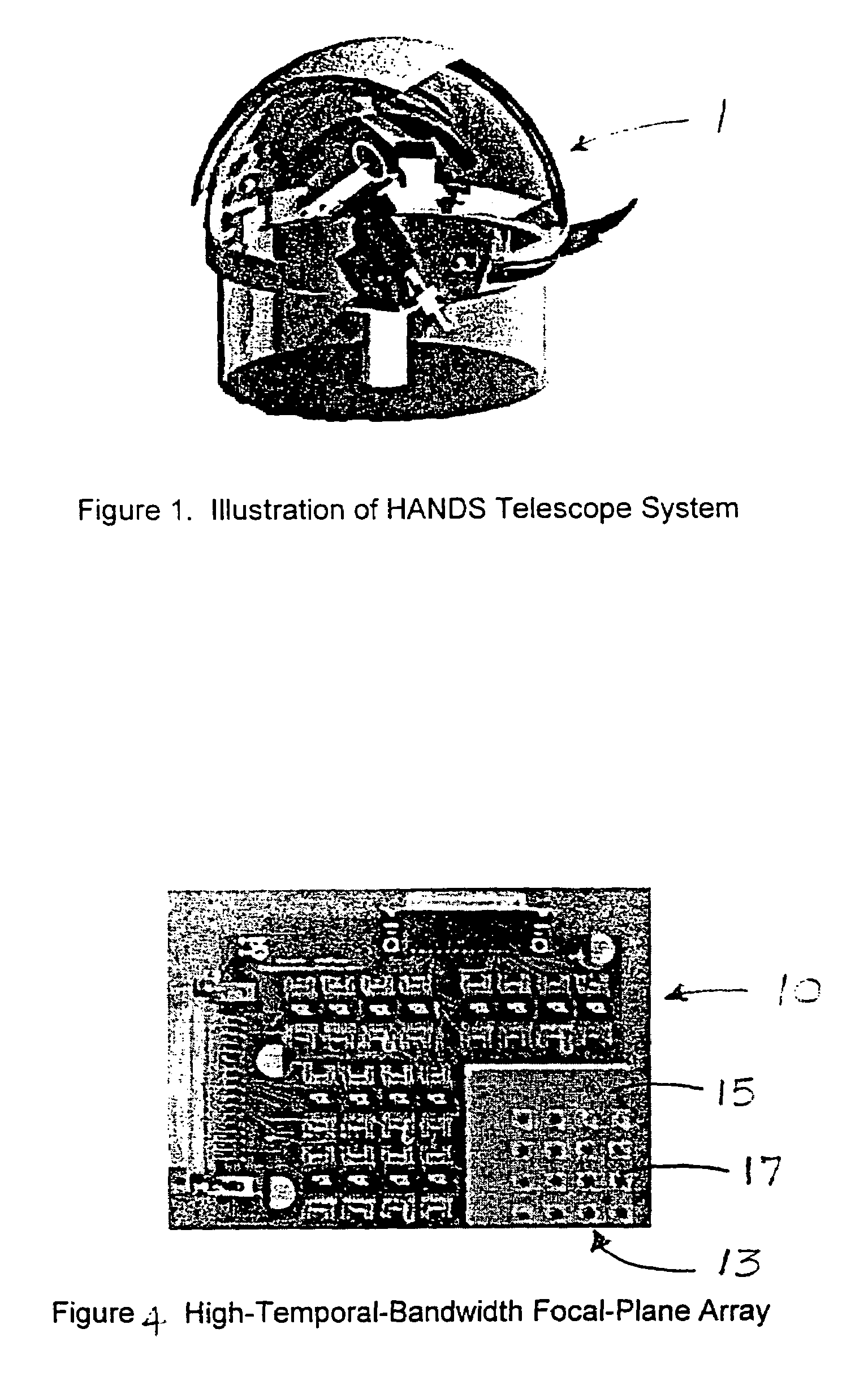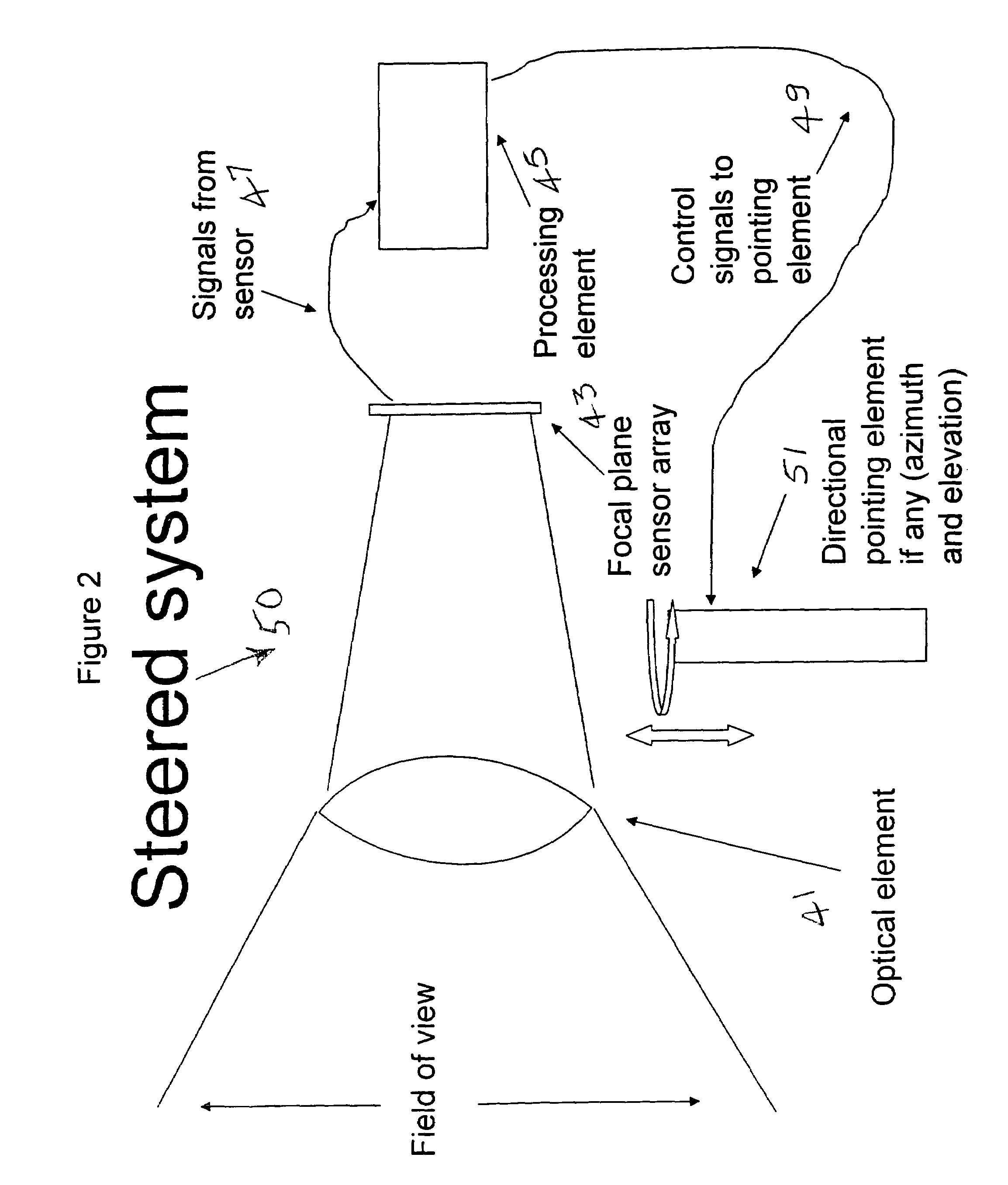Multi-target-tracking optical sensor-array technology
a sensor array and optical sensor technology, applied in the field of missile defense, can solve the problems of insufficient defense system to overcome enemy countermeasures, different threat of today, etc., and achieve the effects of high temporal bandwidth, wide field of view, and high accuracy of positional metrics
- Summary
- Abstract
- Description
- Claims
- Application Information
AI Technical Summary
Benefits of technology
Problems solved by technology
Method used
Image
Examples
Embodiment Construction
[0021]The present invention is a multi-target tracking and discrimination system and method that utilizes other Oceanit technologies to create a unique sensor system.
[0022]The invention can be integrated into and / or used in conjunction with all existing technologies including telescopes, optical systems, detectors, radars, and the like. The following are merely exemplary non-limiting embodiment(s).
[0023]The present invention utilizes an innovative telescope based on revolutionary optical principles. The telescope achieves an unprecedented diffraction-limited, for example, five-degree field of view, with single-pixel resolution over the entire focal plane, and produces extremely high-quality images. The innovative design may preferably use all spherical optics, making it lightweight and inexpensive to manufacture.
[0024]The wide field of view telescope is one of the primary components (see, for example, FIGS. 2 and 3) of Oceanit's High Accuracy Network Orbit Determination System (HAND...
PUM
 Login to View More
Login to View More Abstract
Description
Claims
Application Information
 Login to View More
Login to View More - R&D
- Intellectual Property
- Life Sciences
- Materials
- Tech Scout
- Unparalleled Data Quality
- Higher Quality Content
- 60% Fewer Hallucinations
Browse by: Latest US Patents, China's latest patents, Technical Efficacy Thesaurus, Application Domain, Technology Topic, Popular Technical Reports.
© 2025 PatSnap. All rights reserved.Legal|Privacy policy|Modern Slavery Act Transparency Statement|Sitemap|About US| Contact US: help@patsnap.com



